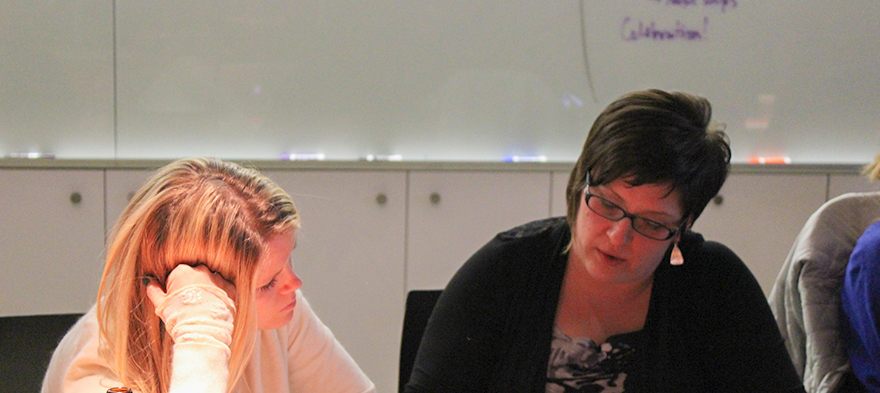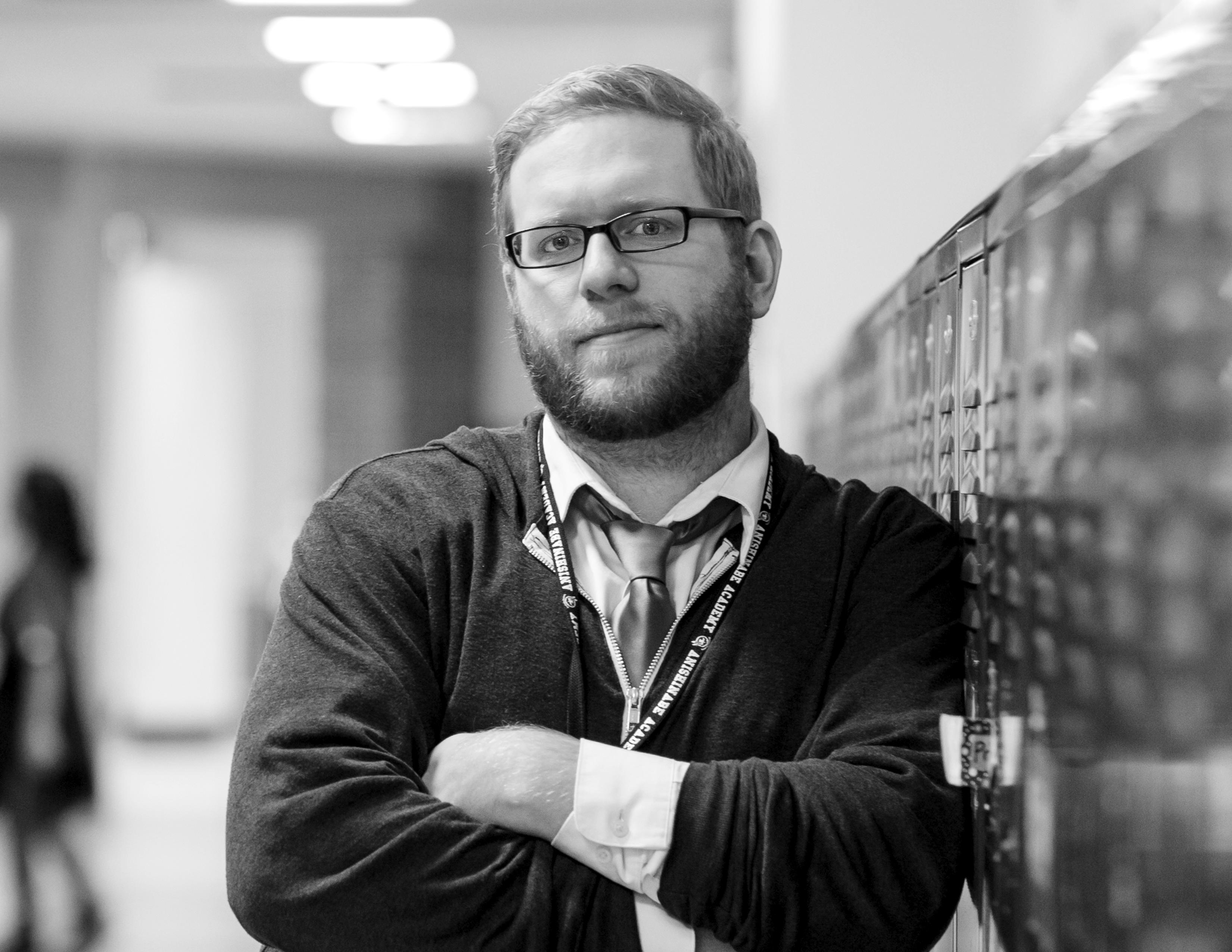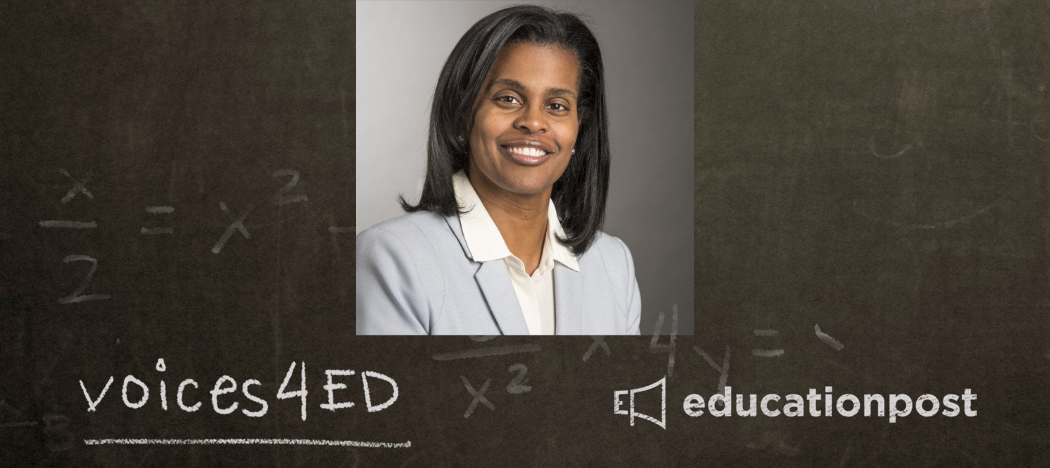
Hope Teague-Bowling Sets Me Straight on the Whole 'White Women in Schools' Thing
BY Tom Rademacher
August 8, 2017
This is a follow-up to my post,
Can We Talk About How Many White Women There Are in Schools? I wanted to dig a little further into the abundance of White women in schools and what it means, so I brought in a real-life, White woman: Hope Teague-Bowling. Teague-Bowling is a teacher in Washington state,
a writer of wonderful things, and co-host of the new podcast,
Interchangeable White Ladies. Check out our interview below.
Rademacher: So, Hope, you’ve read all the things I’ve written so far. What did I get wrong?
Teague-Bowling: Your fear is not unwarranted. We’re viciously protective of one another if attacked by someone outside our group (think the way you’re allowed to criticize your sibling but no one else can talk smack about them). We don’t want to be criticized because a) this system is built on sexism and misogyny which is both oppressive and soul sucking, b) we work really hard at what we do, and c) teaching is extremely personal work. As you pointed out, we have to hold multiple truths simultaneously. We can be both oppressed by the system and benefit from it. But I’d like us to consider the role of social class in this conversation. Much of what I’m seeing and experiencing is a very middle-class way of existing. Speaking in low tones, not pushing, being calm and emotionless seems to be valued in middle-class communication. One of the best books I’ve read on this topic is
Literacy With an Attitude (worst cover ever but the book was spot on about implicit and explicit communication styles). Often middle-class White women talk down to other staff members who speak more directly or in a manner that is just more working class. Also, you mentioned that you’ve been “quieted, mothered or ignored” because of your communication style. This seems to be part of that “aggressive invisible” culture you mention. I’m guilty of doing this to my male
and female colleagues. In part, because I’m an older sibling and it’s my personality to want to help. In part, because I’m a woman and we’re conditioned to “shh” others. Finally, your statement that most of our “conversations around race in schools focus on the experiences of people of color and not on what it means that there are so many White people” gets me thinking about a couple other issues. I think about the gatekeepers who are in place to make it so there are mostly White men running our schools and districts. It also makes me think that as White people we need to figure out how to talk about race and not shy away from it. We have to figure out what our place is in the conversation without dominating the conversation or wallowing in White guilt shedding our White tears. Maybe this means owning our role in perpetuating certain systems and then actively seek to do something about this. I’ll be the first to admit that I don’t have all the answers. This is really what I’m trying to grapple with in a more public way through my blogging and the podcast.
Rademacher:
Wow, I have a bunch of responses to all of your responses, and I worry that no matter how deep we go with this we’re not going to say nearly all the things that need saying.
So much of this overlaps with what all White people need to do. And I really don’t want to minimize all the extra work that White men need to do, because we are really the freaking worst most of the time. So yeah, I’m on board with all of what you said, and I’m recognizing this piece could be a whole book—that I shouldn’t write.
Anyway, let’s talk about what I posted on Facebook and Twitter the other day, and the separate but equally interesting conversations that you were involved in on both platforms. https://twitter.com/MrTomRad/status/890353499422248960
I honestly didn’t feel like I was saying anything too over-the-top, but reaction was pretty strong. What stood out to you?
Teague-Bowling: It was interesting. On Twitter, responses seemed to be about understanding the issues you were bringing up and finding solutions. On Facebook, folks got defensive or were quick to say “not here.” These responses completely miss the point of your observation. In fact, I would argue that the most important thing you bring up is that we need to
see what often goes unnoticed. This could include the people in the room, the voices that are listened to or the unspoken ways of doing things—the unspoken cultures in our workplace. There were also concerns about the dangers of labeling. The claim is that if we label we are promoting more division rather than unity. First, if you’ve ever sat in a staff room you know how comfortable so many are with talking about their students in labels but then bristle when being labeled as a White person. Second, it’s human nature to categorize because it helps us make sense of the world. Third, while labeling can lead to stereotyping, they are different. The bottom line is go watch the movie “Get Out.”
Rademacher: Are there secret White-women meetings? What do you talk about there?
Teague-Bowling: Yes. They're like the White guy meetings, only we get 30 percent less pizza for the same amount of work. In fact, we just talk about sharing flatbread and how much we are justified in drinking our Pumpkin Spice latte because we actually didn’t eat anything today so it’s fine. We talk about how we can make everyone else around us feel guilty for being themselves. We talk smack about gatherings of groups such as the four teachers of color having lunch together but think nothing about our own all White-women lunch meetings. Oh, and we definitely make sure we pressure each other into talking in passive-aggressive tones because we don’t want anyone to feel offended while we skirt around the real issues—especially on matters of race and justice. We also practice our “I’m not pleased with you” pursed lip and our “I can’t believe you did that” sigh/cough. And lastly we spend a significant amount of time practicing the “I’m better than you” eye roll.
Rademacher:
Do you have any really good concrete examples of what White woman culture looks like in schools? I mean, we can’t even try to throw a list out without it sounding stereotypical or doing some awful “you might be a White woman if” stand-up bit (no one should do this). But I think it would be helpful to list the kinds of things we see, and hopefully people can add their own observations in the comments.
Teague-Bowling:
- Favorite White female teacher word: “inappropriate,”
- Indirectly communicating: sending a curt email when you wouldn’t say it to my face.
- Using euphemisms! We love ourselves some euphemism. We walk laps around a topic instead of getting to the point—being mad when people get to the point and perceiving them as inappropriately aggressive or “unprofessional.”
- I grew up in a charismatic Christian church in Asia, so I’m used to “amen-ing” and “that’s right”-ing at trainings. This is not a White middle-class way of responding in meetings.
- Starbucks. Lots and lots of Starbucks.
- Emails, Emails, Emails—phone and in-person conversations with other staff or parents is very intimidating.
- Mistaking silence for listening and learning.
- Mistaking compliance for learning.
- Favoring the students who come from cultures most similar to ours (who doesn’t love the quiet student who listens and does homework every day).
- Sticking to only one way of communicating.
- Avoiding all discomfort such as...not apologizing when we mess up, not allowing kids to speak their mind when it’s different than ours, not talking about being a White woman in front of Brown/Black kids, not talking about race period but especially in front of White kids cuz why talk about that...

Tom Rademacher (Mr. Rad to his students) is an English teacher in Minneapolis, Minnesota. In 2014 he was named Minnesota Teacher of the Year. He teaches writing and writes about teaching on his blog. His book, published by University of Minnesota Press, is called "IT WON’T BE EASY: An Exceedingly Honest (and Slightly Unprofessional) Love Letter to Teaching."




